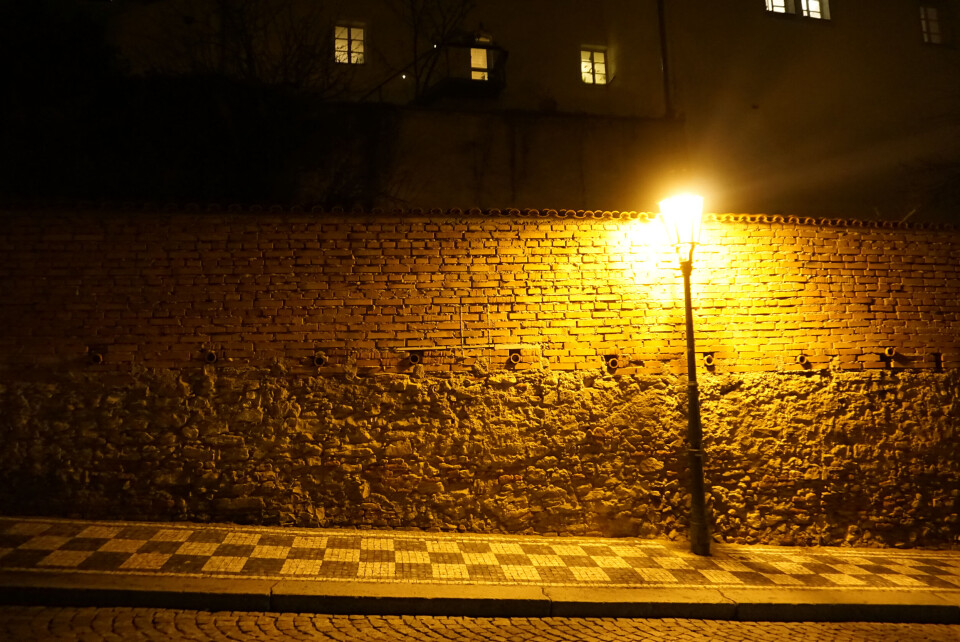-
More than 5,000 French communes use AI to identify poor rubbish sorting
Badly-sorted rubbish can cost millions so communes are turning to high-tech solutions
-
Tax on well-off retirees under consideration for 2026 budget
‘Nothing is off the table’ when it comes to finding €40 billion in savings says Labour Minister
-
Nice airport records passenger boom as tourists flock to city
Airport figures exceeded the pre-Covid record last year, with US visitors significant contributors
Why some French towns are switching off their street lights at night
Reasons include the high – and still rising cost of energy – and the negative effects of light pollution on biodiversity

During France’s Covid lockdowns and curfews, certain communes decided to switch off their street lights at night, both to encourage people to observe restrictions on movement and also to save on money and energy.
Read more:French town's street lights are switched on by locals’ mobile phones
Although Covid rules have now been almost completely lifted, some towns have decided to maintain this measure to help their local budget, and some had already switched their street lights off well before the pandemic.
In its latest report, France’s Agence de l’environnement et de la maîtrise de l’énergie (Ademe) environmental agency estimated that 41% of local authority electricity costs are linked to street lighting.
These bills increased by 25% in 2011 with the loi Nome (Nouvelle organisation du marché de l’électricité), which opened the supplier market up to competition.
Communes also saw their state energy funding cut by €11.5billion in 2014, requiring local councils to cut costs where possible.
“It was necessary to make savings somewhere, so we had to cut off our 7,800 street lamps the following year,” Dominique Fouchier, mayor of Tournefeuille (Haute-Garonne), told Franceinfo.
Spending will no doubt have increased recently as well amid the surging energy and fuel prices of the year so far.
Energy prices had already been creeping upwards between 2005 and 2017, rising from 7.7-15 cents per kilowatt hour (kWh), according to Ademe figures. This alone pushed some communes to turn off their street lights even before the record energy rates seen this year.
“Since the decision we made in 2015 [to switch the lights off], the town is saving nearly €163,727 per year,” said Martine Berry-Sevennes, deputy mayor in charge of ecological transition in Colomiers (Haute-Garonne).
Protecting nighttime biodiversity
Light pollution from street lamps can affect humans’ circadian rhythm, but can also severely impact nocturnal wildlife.
Many insects, for example, are attracted to light, and so the presence of street lights disrupts their natural movements.
It can also disturb the migratory movements of birds, which normally locate themselves with the help of the stars overhead. Switching off street lights in a town can reduce the glow coming from that area, creating a corridor of darkness for the birds.
“We must relight the stars,” to protect biodiversity, Agnès Langevine, vice president in charge of climate change policies for the Occitanie region, told Franceinfo.
It is for this reason that Toulouse has decided to switch off lights surrounding the city’s monuments at 01:00 in the morning “to allow nocturnal life to take place.”
“The advantage of [light] pollution is that it is totally reversible,” said Ademe’s Bruno Lafitte. Turning off street lights has an immediate, positive impact on biodiversity.
Boosting astro-tourism
Reducing light pollution can also give way to a new source of income from astro-tourism. In Occitanie, for example, “there are lots of stargazers who come to [the commune of Sauliac-sur-Célé] to watch the sky” since the street lamps were turned off, the village’s mayor Daniel Bancel said.
In France there are four international stargazing reserves, where the night sky is judged to be of “an exceptional quality.”
The reserves are: Pic du Midi (Occitanie), the Cévennes national park (Occitanie), the Alpes Azur Mercantour reserve (Provence-Alpes-Côte d'Azur) and Millevaches nature reserve in Nouvelle-Aquitaine.
Saving energy with LED lamps
One way in which towns could save money and energy while still lighting their streets would be to update their lamps.
In 2017, 57% of street lights used sodium-vapour lamps, Ademe reports. However, LED bulbs, which only make up 20% of street lights, are both more effective at lighting an area and more energy efficient, and so local authorities are now opting for this technology in greater numbers.
By moving towards LED lights, communes can also reduce the brightness of their lamps at night, so also reducing light pollution.
Observing street light distribution
There are nearly 11 million street lamps in France, meaning that there is one for every six residents.
It is difficult to map out the communes which have opted to switch off their street lamps because there is no national database recording the decisions.
However, Jennifer Amsallem of the Institut national de recherche pour l’agriculture, l’alimentation et l’environnement (Inrae) has said that: “We are currently working on a public lighting switchboard, where each commune will be able to tell us how many lamps they have any how many are being used, if they wish.”
Two organisations – TeleScop and DarkSkyLab – have created graphics reflecting estimations of the level of light pollution across Occitanie in 2019.
The data collected by DarkSkyLab showed that 520 of the region's 4,516 communes had chosen to turn off their street lights after midnight.
Related articles
Smart street lights trialled in Lyon only illuminate if someone passes
‘Glow-worm’ paint lines trialled as way to see in dark on French roads
Lights out for French businesses every night
























